Shepherd (1)
No hair is seen on this shepherd. So embroidery starts with the hat, to be more precise the brim of the hat. It is worked with Slanting Wide Stem stitches (coton à broder No. 16).
Then the crown of the hat and the facial outlines are stitched.
So that the filling pattern of the coat can line up in both sections on either side of the stick, one horizontal thread reaching into both sections was withdrawn.
From there the grid will be established later.
As an underlay, Chain stitches (coton à broder No. 20) were worked in the stick. These stitches will be covered with Satin stitches (2 strands of 6-ply stranded cotton).
The outlines of the hands were stitched with wrapped Back stitches (2 strands of 6-ply stranded cotton),
and the outlines of the coat were worked with Slanting Wide Stem stitches (coton à broder No. 16).
From the previously withdrawn thread, the Limet grid was established.
It may happen that the small thread ends remaining under the Stem stitches were withdrawn by accident. This compromises the stability of the Stem stitches. To avoid this, the thread withdrawing is done along the same line only in both sections to the left and to the right of the stick.
In both the adjacent sections of the coat
and the sleeve section threads are withdrawn staggered to the adjacent section one or two threads. The same is also valid for the withdrawal of the vertical threads.
All sections of the coat were embroidered with filling pattern No. 549.
To familiarize yourself with the pattern, it is good to start with long rows and to fill small sections later.
The unobtrusive pattern is well suited to the coat of a shepherd. If one does not like it, one can also use the One-pattern (Wickelstiche).
The shoes were embroidered with Blanket stitches (coton à broder No.16). The brim of the hat was filled with Satin stitches (2 strands of 6-ply stranded cotton). The crown of the hat was embroidered with close 1-thread weaving (Early Schwalm Whitework).
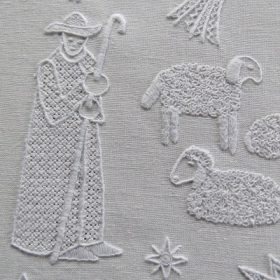






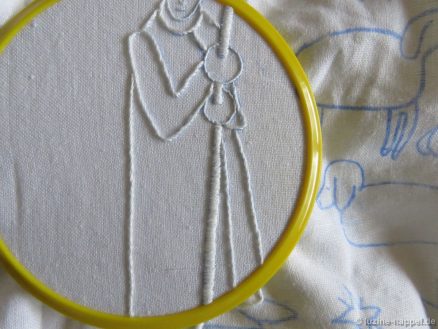

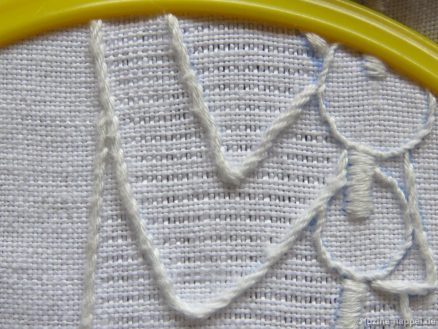

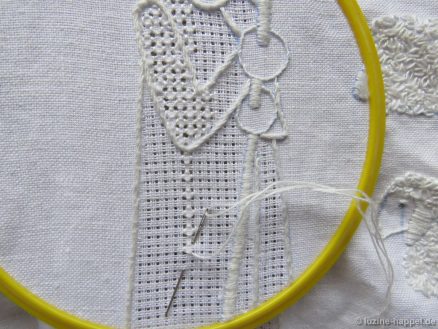
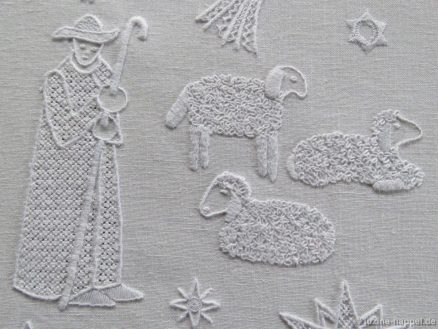


Leave a Reply